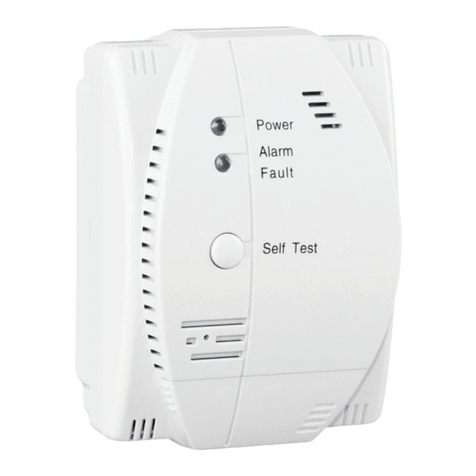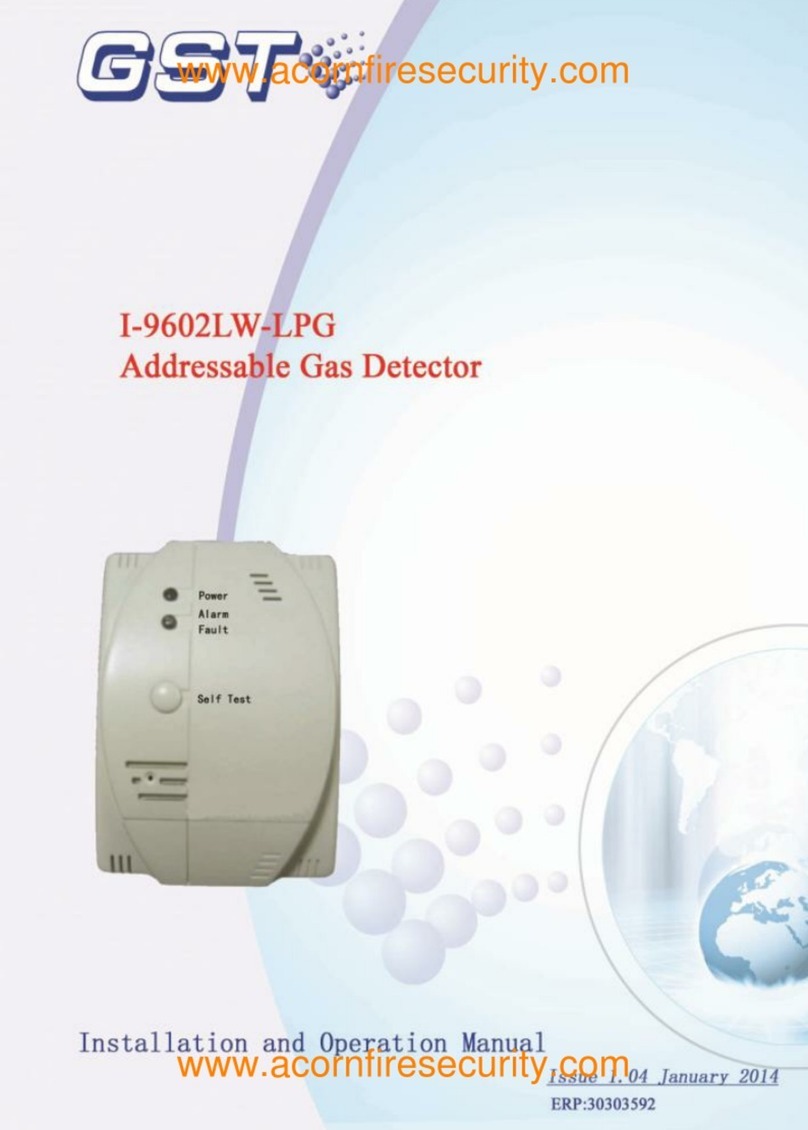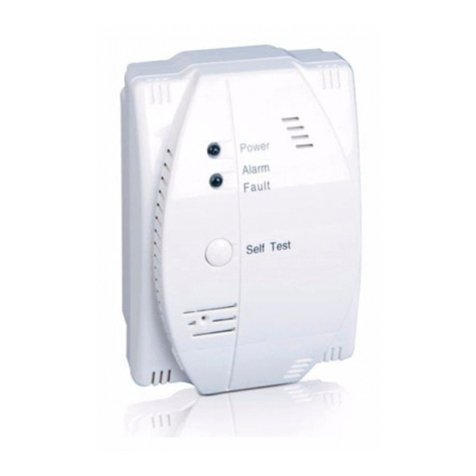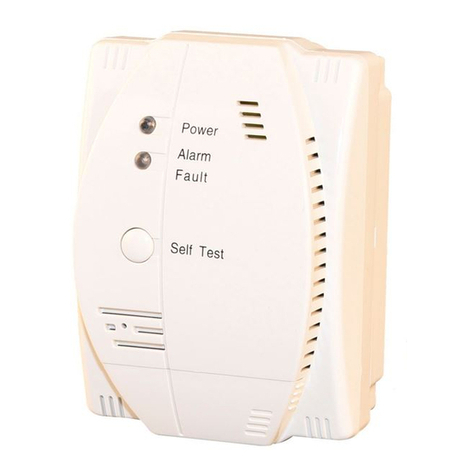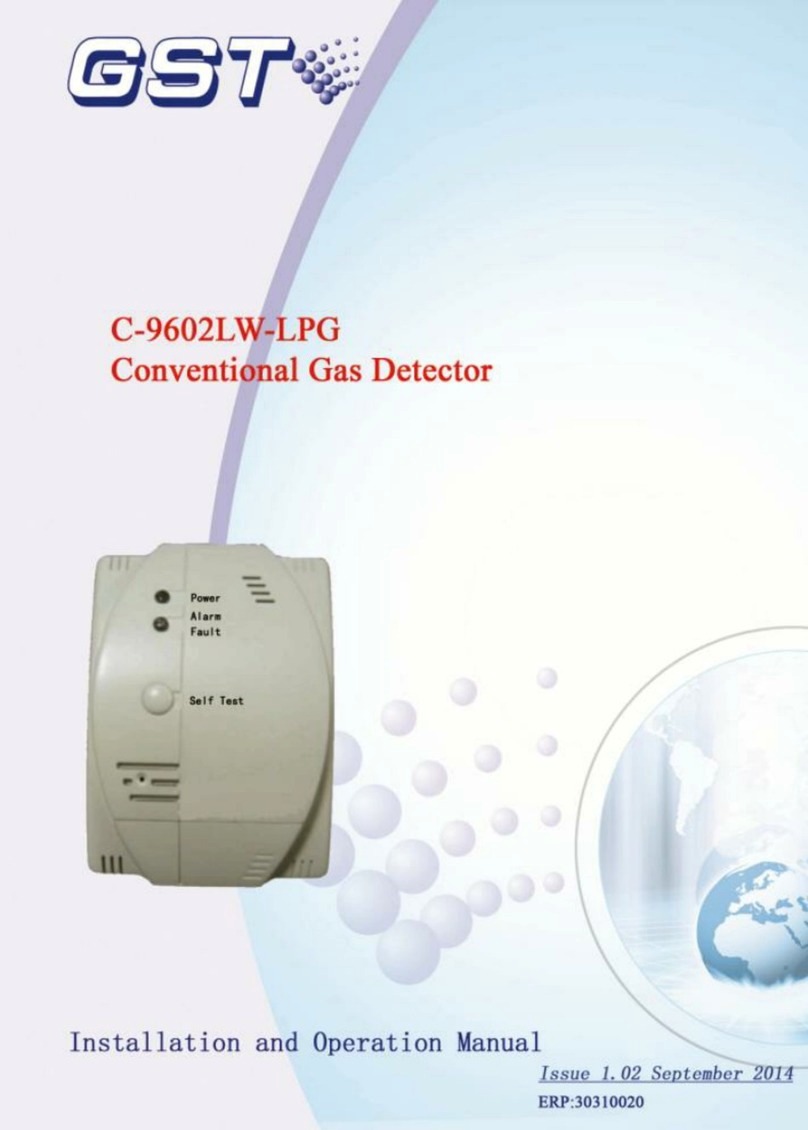
HTTP://WWW.HOMBI.RU
8
VII Maintenance
1. Avoid using much hair tonic, pesticide,
paint, alcohol, diluents etc near the detector, to
avoid affecting normal monitoring of the sensor.
2. In case of fault, never remove or open the
detector by yourselves. Inform our company or
our local office for repair.
VIII Cautions
1. Each type of the detector can only detect
the kind of gas nominated on its label.
2. Don't install the detector at locations with
high temperature (near stoves) or too much oil
smoke (near kitchen ventilator); Keep
environment around the detector clean.
3. The detector can only control JJ or FCR
series solenoid coming with the detector. If
other models are to be used, please consult us.
4. The detector should be tested every half
year.
5. Coal gas detector mustn’t test by a lighter
but hydrogen in a bag. The distance from the
outlet to the detector should be more than
10cm.
6. Liquefied petroleum gas and natural gas





